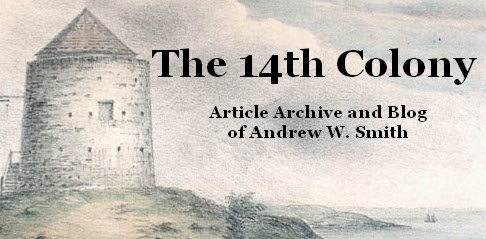The resemblance in psychopathic pronouncements between Iranian President Mahmoud Ahmadinejad and Adolf Hitler is not entirely coincidental. Homicidal hatreds and fascism were exported to the Middle East by European Nazis in the 1930s and ’40s.
Even before the Second World War, Nazi propaganda was planted in the Mid Eastern press and broadcast across the region on Arabic-language German radio. Hitler’s manifesto Mein Kampf
was translated into Arabic. The Middle East was bombarded with Nazi thinking.
Nazism so permeated Middle Eastern culture that by the late 1930s it had found its way into the popular music: "No more Monsieur, no more Mister. In Heaven Allah, on earth Hitler."
Radical political parties throughout the Middle East were modeled to varying degrees on the Nazi party, including the Ba’ath Party of Saddam Hussein and Syrian dictator Bashar al-Assad. Syrian Ba’athist founder Sami al-Joundi recounted: "We were racists, admiring Nazism, reading their books and sources of their thought.”
Especially after the Axis victories early in the war, governments across the Middle East began aligning with Hitler.
A 1941 coup by four Nazi-allied Iraqi fascists (one of whom would be uncle, foster father, father-in-law, and mentor to Saddam Hussein) nearly placed Iraq at the disposal of the Axis, but for an expeditious British military intervention.
Iran’s Nazi sympathies were strong enough that in 1935 Shah Reza Pahlavi renamed his nation from Persia to Iran – Farsi for “Aryan” – in an acknowledgement of Nazi racial theory that Persia was the cradle of the Aryan race. After welcoming Nazi agents into the country and diverting some of its oil to the Axis war effort, Britain and the Soviet Union ousted the Nazi-cozy regime for a more Allies-friendly one in 1941.
The French “ mandates” of Syria and Lebanon became Axis allies when the Nazi-collaborationist regime of Vichy France inherited them and made them the base of Nazism in the region, until a 1941 British and Free French invasion established British control for the duration of the war.
Turkey signed a “Treaty of Friendship” with Nazi Germany in 1941 and helped supply Germany’s war production throughout the conflict.
And future Egyptian presidents Gamal Abdul Nasser and Anwar Sadat both belonged to Egypt’s Nazi Party clone, Misr al-Fatah, and spied for and conspired with Nazi forces against the British in 1942. Sadat was so ardent an admirer of Hitler that he wrote an open letter addressed “My dear Hitler,” eight years after Hitler’s death, fawning , “Even if you appear to have been defeated, in reality you are the victor.”
Of all the Middle East’s importers of Nazism, none was more consequential than the so-called “ Hitler’s Mufti”, the Grand Mufti of Jerusalem, Amin al-Husseini.
Al-Husseini led his first of several pogroms against the Jews in Palestine in 1920. In 1933 he began petitioning the new Hitler regime for a Nazi-Islamic alliance, and five years later the Third Reich started subsidizing his activities.
In 1939, he moved to Iraq, where he advocated and partly orchestrated the pro-Nazi fascist revolution of 1941 . After that collapsed until the last days of the war in Europe, he lived in Berlin as a guest of Adolf Hitler and Hitler’s “Arab Fuhrer”.
He was the Third Reich’s radio propagandist for the Middle East, from which pulpit he exhorted Muslims to “Kill the Jews wherever you find them.”
He recruited Muslims for three Waffen-SS divisions, notably the 20,000-man Hanjar Division, largely responsible for the killing of a horrific 750,000 Christian Serbs, 60,000 Jews, and 26,000 Gypsies.
Al-Husseini was, according to Nuremberg Trial testimony, “one of the initiators of the systematic extermination of European Jewry and had been a collaborator and adviser of Eichmann and Himmler in the execution of this plan.”
After the war, he escaped to Egypt, a free man and Middle Eastern hero, and proceeded to invite Nazi officers to take asylum in the Mid East as military trainers. He called for the 1948 Arab-Israeli War and ordered the 1951 assassination of moderate Jordanian King Abdullah.
And when Amin al-Husseini died in 1974, it was as mentor to his “nephew”, one of the founders of Muslim terrorism, Yasser Arafat.
The War on Terror is in a sense tending to some unfinished business from the Second World War. The ideas that were repudiated in that war in Europe are now being confronted in their new home in the Middle East.
And if the hatreds and fascism of the Middle East were reinforced, if not introduced, by the West, then there is hope that Western democracy can be successfully transplanted to the Mid East as well.
But if Nazism helps explain the origins of Islamic fascism, it may also help predict where it will end. Homicidal anti-Semitism coupled with doomsday arsenal-building, like we are seeing in Iran today, is not a chapter of history we can afford to repeat.
Andrew W. Smith, Cape Sable Island, Nova Scotia and Tulsa, Oklahoma
Published in The Chronicle-Herald, Halifax, Nova Scotia
February 9, 2006
Subscribe to:
Posts (Atom)

